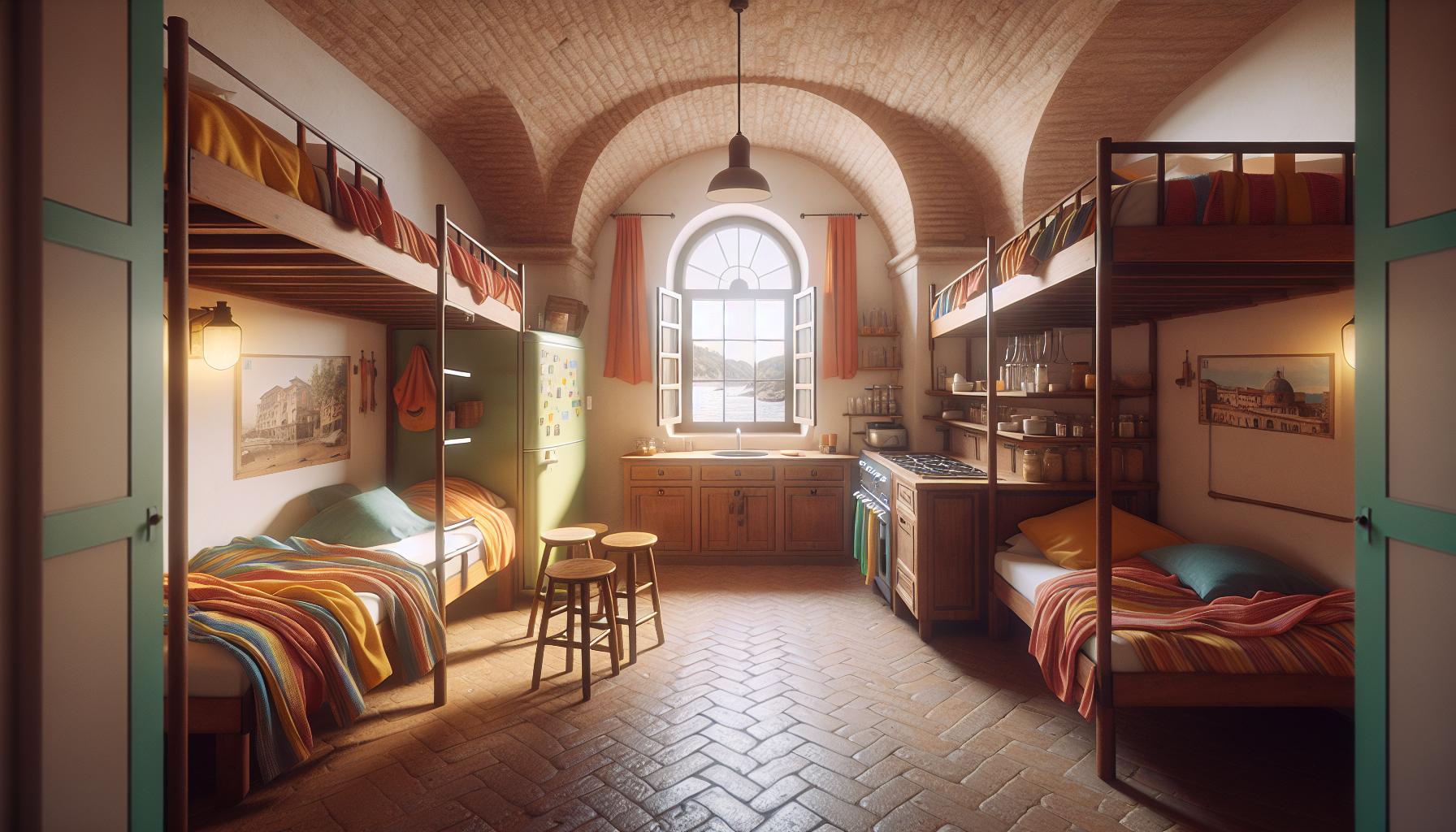I’ve always dreamed of exploring Italy’s stunning landscapes, rich history and mouthwatering cuisine. But like many travelers, I worried that visiting this beloved European destination would drain my bank account. After several budget-friendly trips to Italy, I’ve learned it’s absolutely possible to experience la dolce vita without breaking the bank.
Through careful planning and insider tips I’ve discovered dozens of ways to save money while fully immersing myself in Italian culture. From scoring cheap flights and accommodations to finding authentic local experiences, I’ll share my proven strategies for experiencing Italy’s magic on a modest budget. Whether you’re dreaming of wandering through Rome’s ancient ruins or sipping wine in Tuscany you can make it happen for far less than you might think.
Key Takeaways
- Traveling during shoulder seasons (April-June, September-October) can save 20-30% on accommodations while offering pleasant weather and shorter attraction lines
- Budget airlines and secondary airports like Milan Bergamo (BGY) or Rome Ciampino (CIA) typically offer the cheapest flights to Italy, especially when booked 2-3 months in advance
- Alternative accommodations like hostels (€15-30/night), religious housing (€40-60/night), and agriturismos (€60-100/night) provide authentic experiences at significant savings
- Regional trains booked 3-4 months ahead can save 30-40% on transportation, while city tourist cards (€18-20 for 72 hours) offer great value for local transit
- Local markets and grocery stores reduce food costs by 40-60% compared to restaurants, while “menu fisso” lunch specials (€12-18) provide affordable authentic dining
- Free walking tours and museum discount days (like first Sunday free entry) allow budget-friendly exploration of Italy’s rich cultural heritage
How to Travel to Italy On a Budget
Italy’s peak tourist season determines travel costs significantly. I’ve discovered the optimal times to visit Italy that balance comfortable weather with reduced expenses.
Shoulder Season Benefits
The shoulder seasons of April to mid-June or September to October offer ideal conditions for budget travel to Italy. Hotel rates drop 20-30% compared to peak season prices while maintaining pleasant temperatures between 65-75°F. I’ve experienced shorter lines at popular attractions like the Colosseum Vatican Museums during these periods with wait times under 30 minutes. Key shoulder season advantages include:
- Reduced airfare costs averaging $400-600 from major US cities
- Availability of last-minute accommodation bookings
- Less crowded restaurants with easier reservations
- Comfortable weather for outdoor sightseeing
- Local festivals celebrations unique to spring fall
Low Season Savings
Winter months from November to March except Christmas deliver the most substantial savings on Italian travel. I’ve found hotel rates decrease up to 50% in cities like Rome Florence Venice during this period. Here’s a breakdown of typical low-season savings:
| Category | Peak Season Cost | Low Season Cost | Savings |
|---|---|---|---|
| 3-star Hotel | €150/night | €75/night | 50% |
| Museum Entry | €20 | €12 | 40% |
| Flight (US-Italy) | $900 | $500 | 44% |
| Restaurant Meals | €30 | €20 | 33% |
- Zero waiting time at major attractions
- Better availability for authentic cooking classes
- Unique winter festivals cultural events
- More interaction with locals fewer tourists
- Cozy indoor activities like wine tasting museum visits
Finding Affordable Flights to Italy

Finding budget-friendly flights to Italy demands strategic planning and flexibility with travel dates. I’ve discovered multiple ways to secure cheaper airfare through specific airlines, routes, and booking techniques.
Budget Airlines and Routes
Budget carriers like Ryanair, EasyJet and Vueling offer direct flights to major Italian cities from various European hubs. I’ve found that flying into Milan (MXP) or Rome (FCO) typically costs less than Venice or Florence. Secondary airports such as Milan Bergamo (BGY) and Rome Ciampino (CIA) serve as budget airline hubs with lower landing fees.
| Airport | Average Budget Airline Fare (Off-Peak) |
|---|---|
| Milan Bergamo (BGY) | $65-150 |
| Rome Ciampino (CIA) | $75-180 |
| Milan Malpensa (MXP) | $90-200 |
| Rome Fiumicino (FCO) | $100-220 |
- Track prices through Google Flights alerts 2-3 months before departure
- Book tickets on Tuesday afternoons when airlines release weekly deals
- Compare multi-city routes through major European hubs like London Paris Munich
- Clear browser cookies before each flight search to avoid price inflation
- Use flight aggregators like Skyscanner Momondo Kayak to compare rates
- Book connecting flights separately on budget carriers for additional savings
- Consider nearby departure airports within 2-3 hours of travel distance
- Check airline websites directly after finding deals on search engines
Budget-Friendly Accommodation Options

I’ve discovered multiple affordable lodging options across Italy that significantly reduce travel expenses while maintaining comfort and authenticity. My extensive travels through the country have revealed several cost-effective accommodation strategies that maximize value.
Hostels and B&Bs
Italian hostels provide comfortable beds in shared rooms from €15-30 per night in cities like Rome Florence Milan. Many hostels offer private rooms at €40-70, including essential amenities like Wi-Fi lockers breakfast. Popular hostel chains Generator Plus Hostel Yellow Square maintain high cleanliness standards security features modern facilities. Family-run B&Bs present authentic experiences at €50-80 per night, often including homemade breakfast local recommendations personalized service.
| Accommodation Type | Price Range (per night) | Typical Amenities |
|---|---|---|
| Hostel Dorm Bed | €15-30 | Wi-Fi, Lockers, Common Kitchen |
| Private Hostel Room | €40-70 | En-suite Bathroom, Breakfast |
| B&B Double Room | €50-80 | Breakfast, Local Host, Wi-Fi |
Alternative Lodging Choices
Agriturismos (farm stays) offer unique countryside experiences at €60-100 per night including farm-fresh meals cooking classes wine tastings. Convents monasteries throughout Italy provide simple clean rooms at €40-60 per night particularly in Rome Florence Venice. Religious accommodations maintain strict curfews quiet hours but deliver unmatched cultural immersion. Apartment rentals through platforms like Airbnb average €70-120 per night enabling meal preparation location flexibility extended stays.
| Alternative Option | Price Range (per night) | Key Features |
|---|---|---|
| Agriturismo | €60-100 | Meals, Farm Experience, Rural Setting |
| Convent/Monastery | €40-60 | Central Location, Basic Amenities |
| Apartment Rental | €70-120 | Kitchen, Living Space, Local Area |
Getting Around Italy Cheaply

Italy’s extensive public transportation network offers budget-conscious travelers multiple ways to explore the country’s cities, towns, and countryside. I’ve discovered several cost-effective methods to navigate Italy during my multiple visits, saving up to 60% on transportation costs.
Regional Train Travel
Regional trains in Italy provide an economical way to explore multiple destinations, with fares starting at €6 for short journeys and €25 for longer routes. I book regional train tickets through Trenitalia’s website 3-4 months in advance, securing discounts of 30-40% on standard fares. Super Economy tickets offer additional savings on specific routes, while the Eurail Italy Pass costs €159 for 3 travel days within 1 month.
| Train Type | Price Range | Advance Booking Savings |
|---|---|---|
| Regional | €6-25 | 30-40% |
| Inter-city | €20-45 | 25-35% |
| High-speed | €35-80 | 20-30% |
- Buy 24-hour tickets for €7 in Rome, Milan, or Florence
- Get 72-hour tourist cards for €18-20 including museum discounts
- Use integrated transport passes covering buses, metros, and local trains
- Download city-specific transport apps like ATM Milano or ATAC Roma
- Choose accommodations near metro stations or bus routes
- Travel during off-peak hours between 10 AM-4 PM for less crowded rides
Saving Money on Food and Dining
Italian cuisine offers exceptional value when you know where to eat and shop. I’ve discovered multiple ways to enjoy authentic Italian food while maintaining a strict budget during my travels.
Local Markets and Grocery Stores
Local markets provide fresh ingredients at 40-60% lower prices than restaurants. I frequent mercatos (open-air markets) like Campo de’ Fiori in Rome or Mercato Centrale in Florence for affordable local produce fresh bread olive oil. Italian supermarkets like Conad PAM or Carrefour stock pre-made sandwiches salads at €3-5 ready-to-eat meals at €5-8 perfect for picnic lunches.
| Item | Market Price | Supermarket Price |
|---|---|---|
| Fresh Pasta (500g) | €2-3 | €3-4 |
| Local Cheese (200g) | €3-4 | €4-6 |
| Fresh Produce (1kg) | €1-2 | €2-4 |
| Wine (750ml) | €4-7 | €5-10 |
Budget Restaurant Options
Traditional trattorias osterie offer authentic meals at 30-50% less than tourist restaurants. I look for “menu fisso” (fixed-price menus) ranging €12-18 for a 2-3 course lunch including wine. Local establishments away from main squares typically charge €8-12 for pasta dishes €3-4 for espresso. Street food options like pizza al taglio (€2-4 per slice) arancini (€2-3) provide filling affordable meals throughout the day.
- Eat main meals during lunch hours for reduced prices
- Order house wine (vino della casa) at €8-12 per liter
- Look for aperitivo spots offering buffet with drink purchase
- Choose standing at coffee bars saves 50% vs sitting
- Visit alimentari (delis) for fresh sandwiches at €4-6
Free and Low-Cost Sightseeing
Italy’s iconic attractions offer numerous opportunities to explore without spending much money. I’ve discovered multiple ways to experience Italy’s rich cultural heritage while maintaining a tight budget.
Museum Discount Days
Many Italian museums provide free entry on specific days each month. The state museums offer free admission on the first Sunday of every month through the Domenica al Museo initiative. Rome’s Vatican Museums waive their €17 entrance fee on the last Sunday of each month from 9:00 AM to 2:00 PM. Top museums like the Uffizi Gallery in Florence offer reduced prices of €12 instead of €20 for visitors under 25.
Free Walking Tours
Free walking tours operate in major Italian cities with local guides sharing authentic insights about history, culture, and hidden gems. I recommend platforms like Free Tour Italy or GuruWalk to find certified guides in Rome, Florence, Venice, Milan, and Naples. These tours typically last 2-3 hours and cover main attractions like:
- Historical centers (Centro Storico)
- Famous landmarks: Colosseum exterior, Trevi Fountain
- Local markets: Campo de’ Fiori, Rialto Market
- Street art districts: Ostiense in Rome, Navigli in Milan
- Hidden courtyards and secret passages
| City | Tour Frequency | Average Group Size | Popular Starting Points |
|---|---|---|---|
| Rome | 3x daily | 15-20 people | Spanish Steps |
| Florence | 2x daily | 12-15 people | Piazza della Repubblica |
| Venice | 2x daily | 10-12 people | St. Mark’s Square |
| Milan | 2x daily | 15-18 people | Duomo Square |
While these tours are technically free, it’s customary to tip guides €5-10 based on the experience quality.
Affordable
Italy’s magic doesn’t have to come with a hefty price tag. I’ve shown you that with smart planning strategic timing and local insights you can experience the best of Italian culture without overspending.
From affordable flights and budget-friendly accommodations to cost-effective transportation and dining options I hope these tips will help you create an unforgettable Italian adventure that fits your budget.
Remember that some of the most authentic and memorable experiences in Italy are often free or surprisingly affordable. Now it’s time to start planning your budget-friendly Italian getaway and create memories that’ll last a lifetime.



